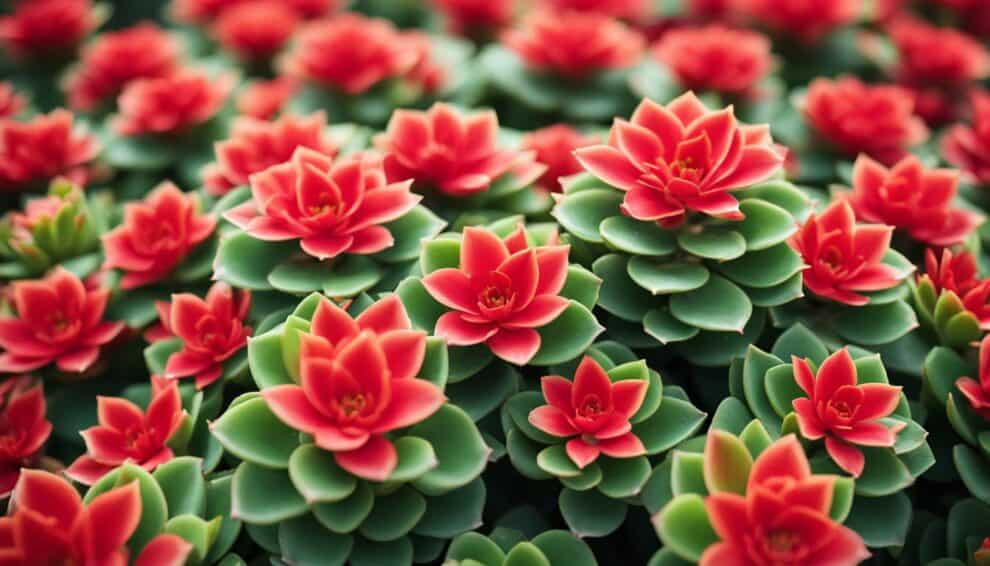Flaming Katy (Kalanchoe blossfeldiana) is a popular houseplant that is known for its vibrant and long-lasting blooms. With its bright colors and low maintenance requirements, it has become a favorite among plant enthusiasts. However, what many people don’t know is that propagating Flaming Katy is relatively easy and can be done with just a few simple steps.

Propagation is the process of growing new plants from existing ones. It’s a great way to expand your plant collection without having to spend a lot of money on new plants. Flaming Katy can be propagated through stem cuttings, leaf cuttings, or by dividing the plant. Each method has its own advantages and disadvantages, but all are relatively simple and can be done with just a few basic tools. In this article, we will explore the different methods of propagating Flaming Katy and provide step-by-step instructions for each one. Whether you’re a seasoned plant lover or a beginner, this article will provide you with the knowledge you need to successfully propagate your own Flaming Katy plants.
Understanding Kalanchoe Blossfeldiana
Species Overview
Kalanchoe blossfeldiana, commonly known as Flaming Katy, is a popular succulent plant that belongs to the Crassulaceae family. It is native to Madagascar and is widely cultivated as a houseplant due to its attractive, long-lasting blooms that come in a range of colors, including red, pink, yellow, and white.
The plant has a compact, bushy growth habit and can reach a height of up to 12 inches. Its leaves are thick and fleshy, with scalloped edges, and are arranged in a rosette pattern. The flowers are small, star-shaped, and grow in clusters at the ends of long stems.
Ideal Growing Conditions
To ensure that Kalanchoe blossfeldiana thrives, it is important to provide it with the right growing conditions. The following table summarizes the ideal growing conditions for this plant:
| Growing Condition | Ideal Range |
|---|---|
| Light | Bright, indirect sunlight |
| Temperature | 60-85°F (15-29°C) |
| Humidity | Low |
| Watering | Allow soil to dry out between waterings |
| Soil | Well-draining, sandy soil |
It is important to note that Kalanchoe blossfeldiana is sensitive to overwatering and is prone to root rot. Therefore, it is recommended to water the plant only when the soil is completely dry.
In addition, the plant should be fertilized once a month during the growing season with a balanced fertilizer. Pruning can also be done to encourage bushy growth and prevent the plant from becoming leggy.
By providing the right growing conditions, Kalanchoe blossfeldiana can be a stunning addition to any indoor garden.
Propagation Methods

There are three major propagation methods for Flaming Katy (Kalanchoe blossfeldiana). Each of these methods has its own benefits and drawbacks.
Leaf Cuttings Technique
The leaf cuttings technique is the most common method for propagating Flaming Katy. It is simple and easy to perform. First, select a healthy leaf from the parent plant. Then, remove the leaf from the plant by gently twisting it. Make sure that the leaf is intact and has no tears or damage. Allow the leaf to dry for a day or two before planting it in well-draining soil. Keep the soil moist and place the plant in a warm and bright location. The leaf will begin to root and form new plantlets within a few weeks.
Stem Cuttings Approach
The stem cuttings approach is another popular method for propagating Flaming Katy. This method involves taking a cutting from the stem of the parent plant. Select a healthy stem and cut it just below a node. Remove the leaves from the bottom half of the stem and plant it in well-draining soil. Keep the soil moist and place the plant in a warm and bright location. The stem will begin to root and form new shoots within a few weeks.
Seed Sowing Process
The seed sowing process is the least common method for propagating Flaming Katy. It requires patience and attention to detail. Collect seeds from the parent plant and plant them in well-draining soil. Cover the soil with a thin layer of sand and keep it moist. Place the plant in a warm and bright location. The seeds will germinate within a few weeks. Once the seedlings have grown to a suitable size, transplant them into individual pots.
Overall, these propagation methods are simple and easy to perform. With a little patience and care, anyone can propagate Flaming Katy and enjoy its beautiful fiery blooms.
Caring for New Plants

Soil and Fertilization
When it comes to caring for new Flaming Katy plants, soil and fertilization are crucial factors. These plants require well-draining soil that is rich in nutrients. It is recommended to use a mixture of potting soil, perlite, and sand in a 2:1:1 ratio, respectively. This will ensure that the plant has proper drainage and receives the right amount of nutrients.
Fertilization is also important for Flaming Katy plants. It is best to use a balanced fertilizer with equal parts nitrogen, phosphorus, and potassium. Fertilizing once a month during the growing season will help promote healthy growth and vibrant blooms.
Watering and Sunlight
Proper watering and sunlight are also essential for Flaming Katy plants. These plants prefer bright, indirect sunlight and should be placed near a window that receives plenty of light. However, direct sunlight can be harmful to the plant and cause its leaves to burn.
When it comes to watering, it is important to not overwater the plant. Flaming Katy plants are susceptible to root rot, so it is best to wait until the top inch of soil is dry before watering. It is also important to avoid getting water on the leaves, as this can cause them to rot.
Transplanting Tips
As Flaming Katy plants grow, they may need to be transplanted into larger pots. It is recommended to transplant the plant in the spring or early summer when it is actively growing. When transplanting, it is important to use a pot that is only slightly larger than the current pot to prevent overwatering.
Before transplanting, gently loosen the roots and remove any dead or damaged leaves. Place the plant in the new pot and fill in with fresh soil. Water the plant thoroughly and place it in a bright, indirect light location. Avoid fertilizing for the first month after transplanting to allow the plant to adjust to its new environment.
Frequently Asked Questions

What is the best method to propagate Flaming Katy from cuttings?
The best method to propagate Flaming Katy from cuttings is to take a stem cutting that is about 2-3 inches long and has a few leaves on it. Dip the cut end of the stem in rooting hormone powder and plant it in a well-draining soil mix. Keep the soil moist but not waterlogged, and place the cutting in a bright, indirect light.
How long does it take for Flaming Katy cuttings to root in water?
Flaming Katy cuttings can take anywhere from 2-6 weeks to root in water, depending on the temperature and light conditions. It’s important to change the water every few days to prevent the growth of bacteria or fungus.
What are the common issues when growing Flaming Katy indoors?
Common issues when growing Flaming Katy indoors include overwatering, which can lead to root rot, and lack of sunlight, which can cause the plant to become leggy and stop blooming. It’s important to provide well-draining soil, bright, indirect light, and to allow the soil to dry out slightly between waterings.
How can I encourage my Flaming Katy to bloom more frequently?
To encourage your Flaming Katy to bloom more frequently, provide it with bright, indirect light and keep the soil moist but not waterlogged. Fertilize the plant every 2-3 weeks during the growing season with a balanced fertilizer. Pinch back any leggy growth to encourage bushier growth and more blooms.
What are the steps for pruning a Flaming Katy to maintain its shape?
To maintain the shape of your Flaming Katy, prune it back after it has finished blooming. Use clean, sharp scissors or pruning shears to remove any dead or damaged leaves or stems, and to shape the plant as desired. Be sure to sterilize your tools between cuts to prevent the spread of disease.
Is it possible to grow Flaming Katy outdoors, and if so, under what conditions?
Yes, it is possible to grow Flaming Katy outdoors, but it should be planted in a location that receives bright, indirect light and is protected from direct sunlight. The soil should be well-draining, and the plant should be watered regularly but allowed to dry out slightly between waterings. Flaming Katy is not frost-tolerant and should be brought indoors if temperatures drop below 50°F.













